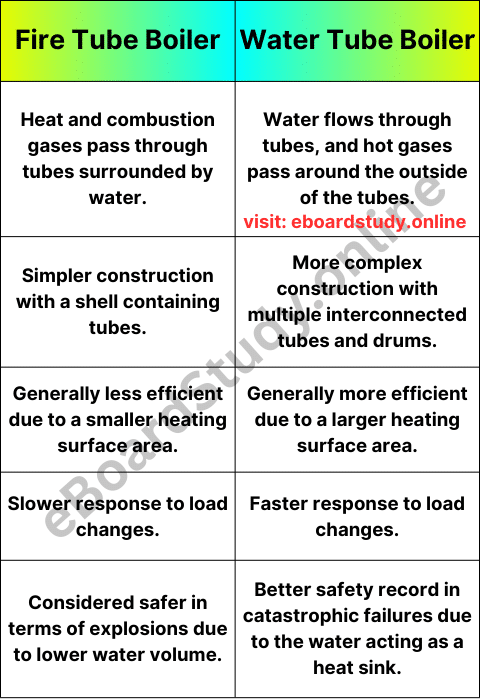What is a Fire Tube Boiler?
A fire tube boiler is a type of boiler that is frequently used to generate steam for use in a variety of industrial and commercial applications, heat buildings, and provide hot water. It is called a “fire tube” boiler because the combustion gases produced by burning fuel pass through a series of tubes surrounded by water. Here’s how a fire tube boiler works and its key features:
Working Principle:
- Fuel (usually gas, oil, or solid fuels like wood or coal) is burned in a combustion chamber.
- The hot gases produced during combustion flow through a series of tubes immersed in a water-filled shell or container.
- As the hot gases pass through these tubes, they transfer their heat to the water surrounding them.
- The heat absorbed by the water causes it to boil and produce steam.
- The steam generated in the boiler is collected in a steam drum, which can be piped out for various uses, such as heating or powering machinery.
What is a Water Tube Boiler?
A water tube boiler is a type of boiler used for various industrial, commercial, and power generation applications. In a water tube boiler, water is circulated inside a network of tubes, and the combustion gases pass around the outside of these tubes to transfer heat. This design offers several advantages over fire tube boilers and is often used in high-pressure and high-capacity applications. Here are the key features and working principles of water tube boilers:
Working Principle:
Water Circulation: Water tube boilers contain a large number of tubes, typically arranged in a way that forms a complex network. These tubes are filled with water.
Heat Source: Fuel (such as gas, oil, or coal) is burned in a combustion chamber or furnace. The hot gases produced during combustion flow through the outside of the tubes.
Heat Transfer: As the hot combustion gases pass over the outer surface of the tubes, they transfer their heat to the water inside the tubes. This causes the water to heat up and eventually produce steam.
Steam Generation: The steam generated in the tubes rises naturally due to its lower density compared to water. It collects in a steam drum or separator at the top of the boiler.
Steam Distribution: The steam collected in the steam drum is then piped out for various applications, such as power generation, heating, or industrial processes.
Difference Between Fire Tube Boiler and Water Tube Boiler


